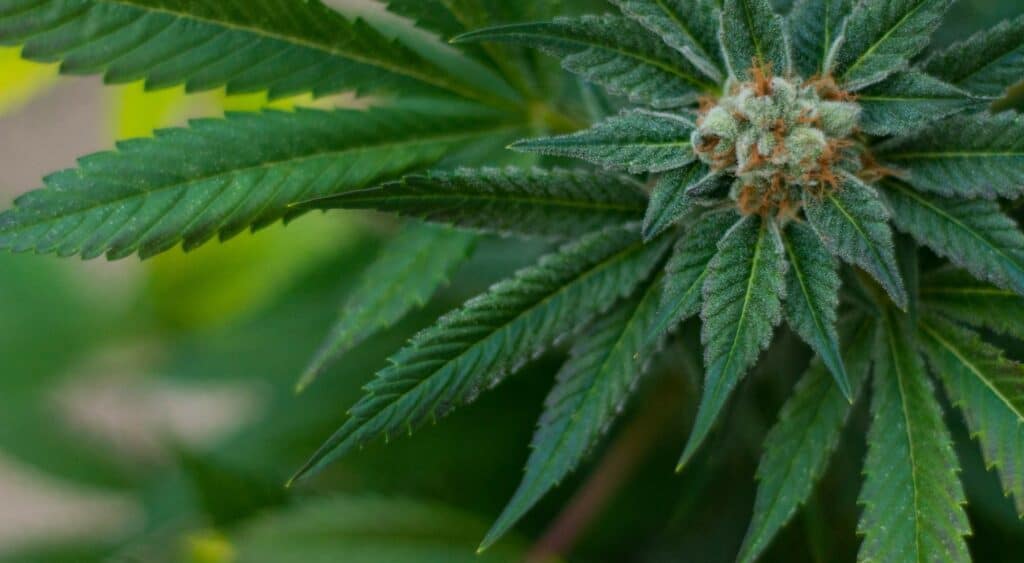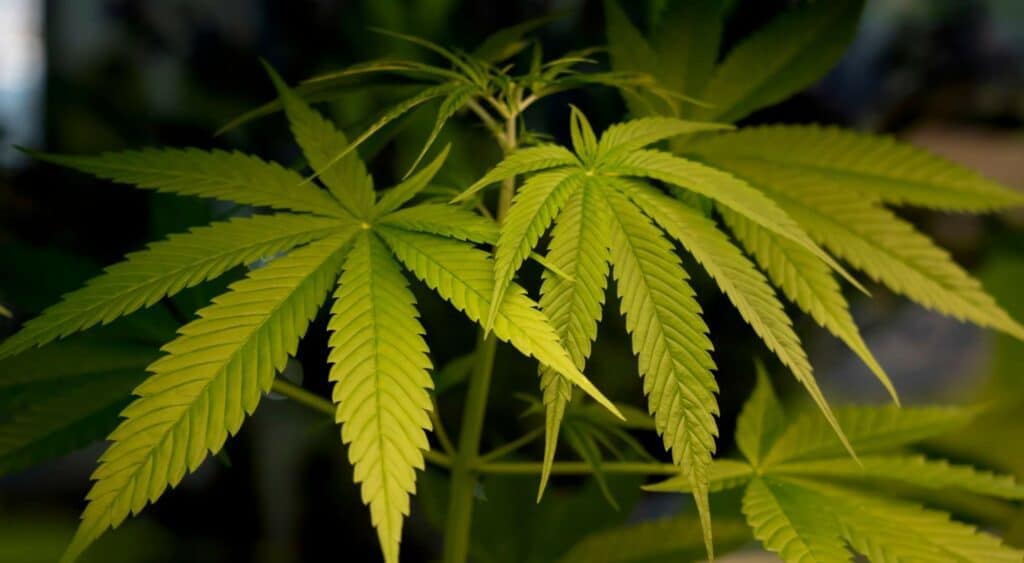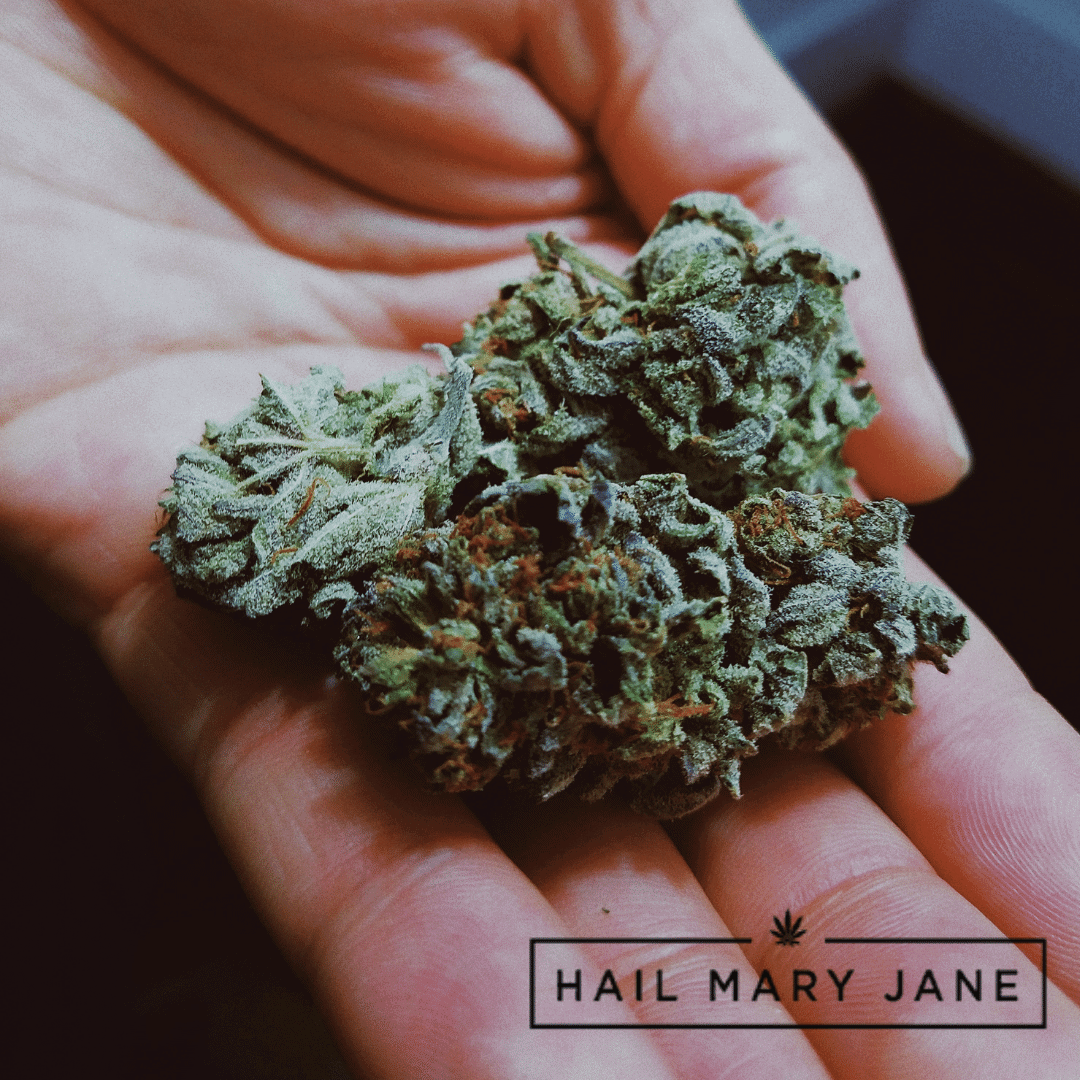You’ve been doing your research and you’ve grown curious, “Is there a difference between indica vs sativa?”
Truth be told, there is quite a bit of controversy over whether or not there really is a difference. Science provides one answer, though some cannabis users feel differently.
Keep reading to learn if there truly is a difference between the two, as well as what you need to know to pick a cannabis product that best meets your unique needs.
Table of Contents
- Indica vs. Sativa Effects: Is there a Difference or Is it Just a Sales Tactic?
- Indica Effects
- Sativa Effects
- How Do Sativa and Indica Interact With Each Other in Hybrid Strains?
- Is There Really a Difference Between Indica and Sativa? 3 Key Differences to Help You Understand Which Subspecies to Choose
- #1: Physical Differences of Indica vs. Sativa Plants
- #2: Origin of Indica vs. Sativa
- #3: Biochemical Properties of Indica vs. Sativa
- How to Choose the Right Strain for You
- Most Commonly Asked Questions About Indica vs. Sativa
- Let Hail Mary Jane Help You Find the Best Cannabis Products Based on Your Wants and Needs
Indica vs. Sativa Effects: Is There a Difference or Is it Just a Sales Tactic?
Marijuana growers and sellers have used the names indica or sativa to explain the effects they have on people when they are consumed, but is this really the best way to classify strains — or is it just a sales tactic?
Scientists say that there is no evidence that indica and sativa have different effects because, on a molecular level, the two strains don’t have any pattern differences that set them apart from each other.
Even though the chemical breakdown of cannabinoids varies from strain to strain, sativa strains are considered THC-dominant and indica strains are typically considered CBD-dominant. This is important to keep in mind when choosing a strain.
Although some people say it’s a sales tactic, dozens of Reddit users have found that there is indeed a difference between indica vs. sativa effects.
But, what most of these users also found is that they enjoy the effects of hybrids with either a sativa-dominance or indica-dominance.
Indica Effects
Indica-dominant strains are typically used for:
- Relaxation
- Stress relief, and to
- Treat medical conditions.
Indica strains tend to produce a sedating or full-body high and are often described as a feeling you might have after a good massage.
Time — as well as your thoughts — may feel as they are beginning to slow down.
Many people experience effects such as:
- Becoming more mellow/calm
- Stress relief
- Pain relief
- Muscle relaxers
- Seizure prevention
- Appetite simulation
- Lower anxiety levels; and
- Better sleep
Because indica strains are said to have such a relaxing effect, they are best for nighttime use in order to avoid daytime drowsiness. Many medical marijuana strains contain a hybrid of indica strains.
Popular Indica Strains
- Kindu Kush
- Afghan Kush
- Northern Lights
- Granddaddy Purple
- Strawberry Kush
- Bubba Kush
Sativa Effects
Sativa strains are known for producing a “head-high” and are associated with effects such as:
- Uplifted moods
- Increased energy
- Increased alertness
- Dry mouth
- Euphoric feelings
- Increased energy
- Heightened creativity
Say, for example, you are prone to anxiety, choosing a strain that is high in THC and low in CBD may not create an ideal effect. The reason for this is because, in THC-dominant strains, there are no balancing effects from CBD, so mental side effects are common.
Popular Sativa Strains
- Jack Herer
- Durban Poison
- Green Crack
- Super Silver Haze
- Sour Diesel
- Purple Haze
How Do Sativa and Indica Interact With Each Other in Hybrid Strains?
Most of what you’ll purchase from dispensaries are hybrid strains of indica and sativa, and most cannabis users find that they enjoy these hybrids because of the effects.
Hybrid strains are ideal for those looking for a balanced high. An even mix of indica and sativa, for example, can offer light relaxation while still helping you focus.
If you’re looking for this balanced high, try to find a hybrid that is an (or close to even) mix of indica and sativa.
Hybrid strains may also be a mixture of breeds of the same strain, like an indica with another indica or a sativa with another sativa.
Genetically mixing sativa and indica was one of the most important things that ever happened in modern marijuana. It opened the door to genotypes and phenotypes that we never would have imagined possible.
We have way more strains of marijuana now than we did fifty years ago. Strains like…
- Blue Dream
- OG Kush
- And White Widow
…are more hybrid success stories, not to mention Trainwreck, AK-47 and Cheese.
Breeders are usually playing something of a puzzle game with strains; trying to get a plant to show this quality and that quality. By mixing the qualities of both indica and sativa, breeders have created an even bigger gene/phene pool in the world of cannabis. Even genetic mutations have become accidental winners, revealing qualities to us that we didn’t even know the marijuana plant could have.
Hybrid mixing basically changed marijuana genetics, and although it can be harder and harder to come across pure strains, more and more are being created.

Is There Really a Difference Between Indica and Sativa? 3 Key Differences to Help You Understand Which Subspecies to Choose
Yes, there are several differences between indica and sativa, specifically where they originate from and the types of leaves on the plant.
Although many cannabis retailers sell indica vs. sativa based on the “effects” they are said to provide, it’s important to understand the differences in the plants and where they originate from.
#1: Physical Differences of Indica vs. Sativa Plants
Botanists and cultivators actually use the physical differences in the leaves, such as …
- The shape of the leaves,
- The variations in height, and
- The branching patterns of the leaves
… to indicate what type of strain it is. This is where the names “Indica” and “Sativa” come from.
Indica plants are typically short and bushy, with wide, short, dark green leaves that have wide blades. Sativa plants, on the other hand, are tall and slender.
Indica also tends to have a shorter flowering time with a higher yield from the plant, making it popular among cannabis growers.
Indica leaves tend to be shorter and bushier than Sativa leaves, which are generally skinny and light green.
#2: Origin of Indica vs. Sativa
Indica vs Sativa plants originated in different parts of the world.
Cannabis indica is grown in harsh, dry climates and originated in the Middle East, in places like Pakistan and Afghanistan. It originated in the Kush Mountains.
Cannabis sativa comes from warmer climates, like parts of Southeast Asia, and South America — their natural habitat is close to the equator.
#3: Biochemical Properties of Indica vs. Sativa
Each subspecies has varying levels of tetrahydrocannabinol (THC), cannabidiol (CBD), and terpenes in the strain.
Strains of cannabis can contain hundreds of different chemicals, but the chemicals we’re going to focus on in both indica and sativa are:
- Terpenes
- Tetrahydrocannabinol (THC); and
- Cannabidiol (CBD)
These chemicals have varying effects on the human body and although information about the actual amounts of THC or CBD in indica vs. sativa is not entirely researched, it is helpful to understand how the chemical makeup of each subspecies may differ.
Terpenes
Although dispensaries can easily classify strains as indica vs. sativa, the terpene profile of the strain might actually be one of the best ways to learn about the effects it may have on your body.
Terpenes give cannabis strains unique sets of smells, flavors, and characteristics.
When these terpenes are present, they can change how THC interacts with receptors in the brain — we’ll talk about this more in the following section.
The type of terpene can help determine what kind of effects indica vs. sativa may have and how intense the high may be.
Myrcene, for example, is the most common terpene in cannabis.
If myrcene is found in a specific strain with a volume of more than .5 percent, it is considered an indica. If the volume of myrcene is under .5 percent, the strain is considered a sativa.
Other terpenes that are found in strains of cannabis include:
- Bisabolol — contains notes of chamomile and tea tree oil, it is thought to reduce inflammation and irritation.
- Caryophyllene — peppery and spicy, it may help ease anxiety, depression, and even help with ulcers.
- Linalool — containing floral notes, this terpene is said to improve relaxation and enhance moods.
- Ocimene — contains notes of basil, parsley, and mango, and may ease congestion, and help immunity from viruses and bacteria.
- Pinene — producing a pine aroma, pinenes are said to help boost memory, reduce pain, and ease nausea and coordination problems associated with THC usage.
- Terpinolene — cannabis containing terpinolene is said to have sedative, antifungal, and antibacterial properties. It smells of apples, cumin, and conifers.
Aside from understanding which terpenes are in the strain of cannabis you choose and the effects they may produce, it’s also important to understand THC-dominance vs. CBD-dominance.
THC-Dominant Strains
THC is what causes the “high” effect that people associate with using cannabis. THC is sourced from marijuana and is said to give off a euphoric feeling.
Strains of cannabis higher in THC are ideal for people looking for:
- Pain relief
- Nausea relief, or
- Appetite stimulation.
THC acts through cannabinoid receptors in the endocrine system, activating the brain’s reward system which governs our responses to pleasurable behaviors.
THC stimulates neurons in that reward system to release higher levels of dopamine, resulting in the “high” feeling associated with THC.
Recreational users seeking a more potent psychoactive effect prefer THC-dominant strains, like sativa.
CBD-Dominant Strains
Strains that are cannabidiol dominant typically have trace amounts of THC — without those higher levels of THC, CBD-dominant strains bind very weakly to the cannabinoid 1 (CB1) receptors in the brain that THC-dominant strains bind to very strongly.
This is why CBD-dominant strains don’t have the same euphoric or sedation effects as THC-dominant strains. CBD-dominant strains, like indica, have been known to help with:
- Anxiety
- Depression
- Inflammation
- Pain
- Mental Disorders
- And more.
Balanced or Hybrid Strains
Hybrid strains tend to have equal amounts of CBD and TCH, they are a crossbreed between indica and sativa. Hybrid strains are the most common strain on the market.
The genetic makeup of the strain can be:
- Indica dominant
- Sativa dominant
- A balanced blend of the two.
Hybrid strains are considered the “best of both worlds”.
Plant genetics play a role in how much products affect you, but it isn’t the only contributing factor. This is why it’s important to know the cannabinoid content as well as the genetic makeup.
For example, if you have a product that is 15% THC and 5% CBD, it may cause different effects than if it were indica dominant or sativa dominant.
Most of the cannabis strains used today are going to be a hybrid, even if it is labeled indica vs sativa. Over time, cross-breeding has limited the amount of pure sativa or indica strains available.

How to Choose the Right Strain for You
It’s not uncommon for people to use both indica and sativa strains for different reasons.
Are you looking to feel energized during the day? Sativa strains might be the best fit for you. If you’re looking for a strain that will help you sleep, using indica before bed may help you relax.
The best way to find the right strain for you is to keep the following considerations in mind.
#1: Figure Out What You’ll Be Using Indica vs. Sativa For
What are you trying to achieve?
Knowing what effects you’re aiming for or what ailment you might be trying to treat will help you narrow down which strain will be right for you.
Don’t be afraid to ask questions while at the dispensary to find out what might be the best strain for your specific needs.
#2: Know Your Tolerance
Different strains have different levels of cannabinoids. If you are just starting on your cannabis journey, consider using strains that are considered “entry-level” strains.
Blue Dream, for example, is loved among beginners and experts due to its balanced effects and taste.
Strains with higher levels of cannabinoids are going to be more potent, like sativa that is THC-dominant, so you may want to start with a CBD-dominant product if you are just beginning or are looking for fewer effects.
#3: Know Your Medical History
When choosing indica vs sativa, it’s important to remember that certain strains can have intense effects. Some strains may interact with existing medical conditions or medications.
Always consult a doctor or healthcare professional if you are concerned about any potential risks or interactions.
#4: What Consumption Method Will You Use?
Every consumption technique of cannabis has different effects.
If you smoke or vape indica vs sativa for example, you may feel the effects more quickly. Indica vs sativa edibles such as gummies tend to be easier to tolerate, but the effects may not be felt as quickly.
There is also a distinct difference between homemade edibles and edibles that are purchased from a dispensary
The cannabis in homemade edibles may not be distributed evenly throughout the product. Dispensary edibles are typically considered the most reliable in terms of how effects are felt.
Most Commonly Asked Questions About Indica vs. Sativa
Indica vs. Sativa: Which is Best for Medical Use?
Although science says we should base our decisions on which strain to use on the chemical makeup, one survey, done by the Western University of Health Sciences, found that respondents said indica is the preferred strain for medical use.
It is more likely to help with:
- Headaches
- Neuropathy
- Seizures
- Joint pain
- Glaucoma
- Pain management
- Sleep assistance
Indica vs. Sativa: Which is Best for Recreational Use?
Sativas tend to be known for their mental effects. They are said to be uplifting and invigorating, making these strains ideal for creative pursuits or social gatherings.
Many sativa fans compare the effects of the strain to having your morning cup of coffee.
What Is the Cost Difference Between Indica vs. Sativa?
Generally speaking, there is not a cost difference between the two. In some dispensaries, you may find that hybrids are the most expensive, especially if you are looking for a specific blend of cannabis strains.
Which is More Popular Indica or Sativa?
According to GreenState, cannabis users in the United States much prefer indica strains over sativa strains.
Indica vs. Sativa: Which is Better for Beginners?
There is no black and white answer to this question. It truly depends on what you’re looking to get out of the experience.
If you are looking for a relaxing effect or a pain reliever, an indica that is CBD-dominant may be ideal for you.
If you are someone looking to be more productive or need a product that is more uplifting, a sativa that is THC-dominant could be more appropriate.
How Do Indica and Sativa Compare to a Landrace?
Other than sativa and indica, there is one other “type” of marijuana that wasn’t really mentioned here. There is such a thing as a ‘landrace’, which is something like ‘no strain of marijuana at all’. Landraces are hard to come by because we have been involved in the genetic breeding of cannabis for so long.
They are strains that basically don’t have a strain, for lack of a better way of explaining it. If you can imagine what the original strain of marijuana might have been, the landrace is it.
Some people put hemp in the category of being a landrace, but even that is questionable. The landrace is what our ancestors were smoking thousands of years ago, before we started picking and choosing the different qualities that we liked.
Marijuana is much stronger now than it was in the past, and cannabis sativa and cannabis indica carry generally much higher THC contents than landraces. It is for this reason that it is highly unlikely to find a landrace strain available in dispensaries.
Let Hail Mary Jane Help You Find the Best Cannabis Products Based on Your Wants and Needs
Still unsure if indica vs. sativa is best for your wants or needs? Maybe you just aren’t sure of which popular strain you want to choose?
Hail Mary Jane has been helping cannabis users find the best products since 2008.
We’re positive we can help you find the ideal product for you, too.
From product reviews and referrals to curated cannabis products we can help you decide whether an indica or a sativa — or maybe a hybrid — is right for you.




